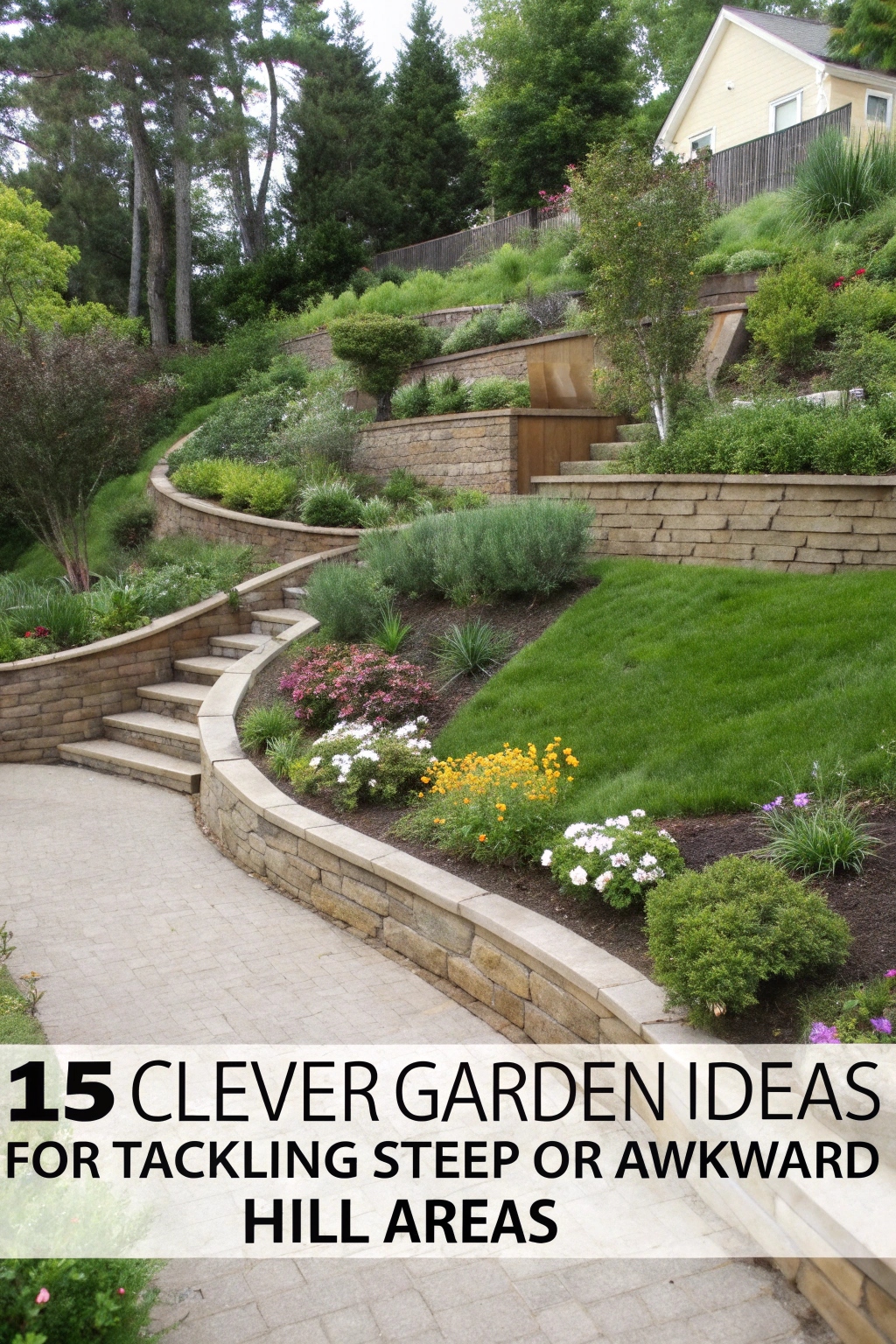Are you struggling with a big hill in your garden? You’re not alone! Many people have steep hill areas in their yards, and it can be hard to know what to do with them. But don’t worry, there are many clever solutions to turn your hill into a beautiful and functional space.
You can use retaining walls, terracing, or decking platforms to create areas for plants, seating, or play. This will not only make your garden look great, but also help to stabilize the soil and prevent erosion.
Building Retaining Walls for Sloping Gardens

Retaining walls provide structural support and help create flat spaces on sloping gardens. They can be built using various materials, such as stone, brick, or concrete, and are designed to hold back soil and prevent erosion. A well-constructed retaining wall can add visual appeal and functionality to a steep hill area.
Terracing for Steep Hill Areas
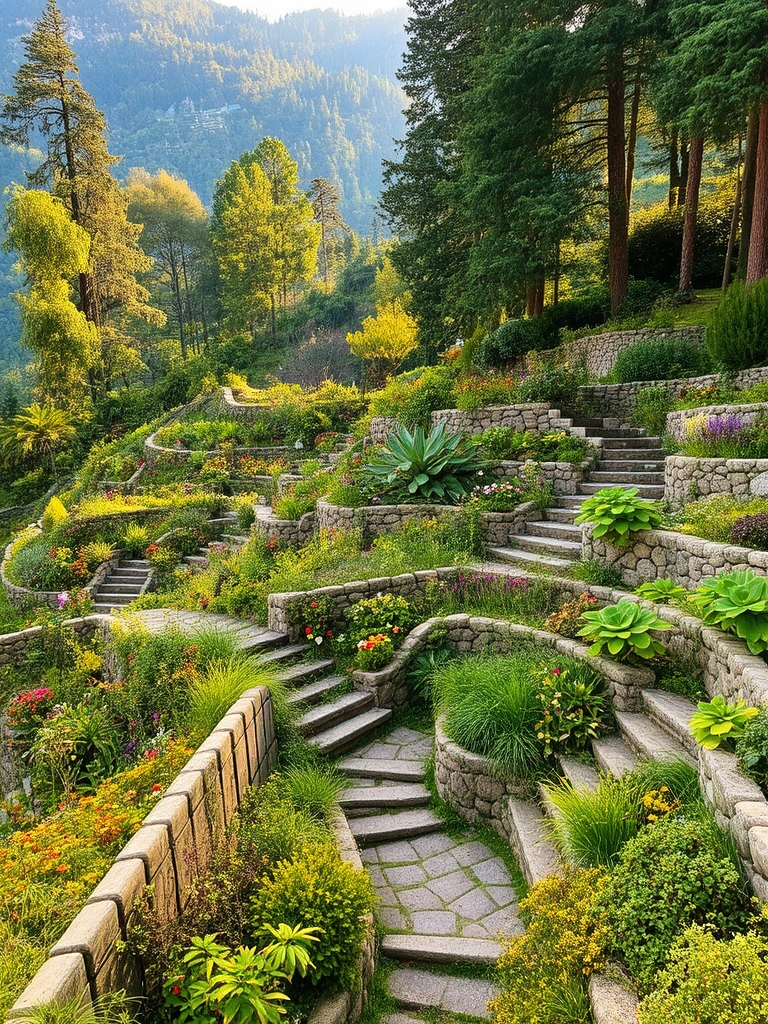
Terracing is a practical solution for steep hill areas, allowing for flat spaces to be created amidst the slope. This technique involves carving out level sections, often with retaining walls, to provide stable ground for gardening, reducing erosion and creating visually appealing layers of vegetation and hardscaping.
Creating a Rock Garden on a Slope

A rock garden on a slope can be a stunning feature, with carefully selected rocks and plants arranged to cascade down the hill. This style of garden requires minimal maintenance and can thrive in areas with poor soil. Choose drought-tolerant plants and incorporate stepping stones for easy access and visibility.
Designing a Meadow Garden on Uneven Terrain

Designing a meadow garden on uneven terrain requires careful planning. Choose drought-tolerant plants and groundcovers that can thrive on steep slopes, and consider using retaining walls or terracing to create level areas. Native wildflowers and grasses are ideal for meadow gardens, as they require minimal maintenance and can help with erosion control.
Using Decking to Create a Level Space
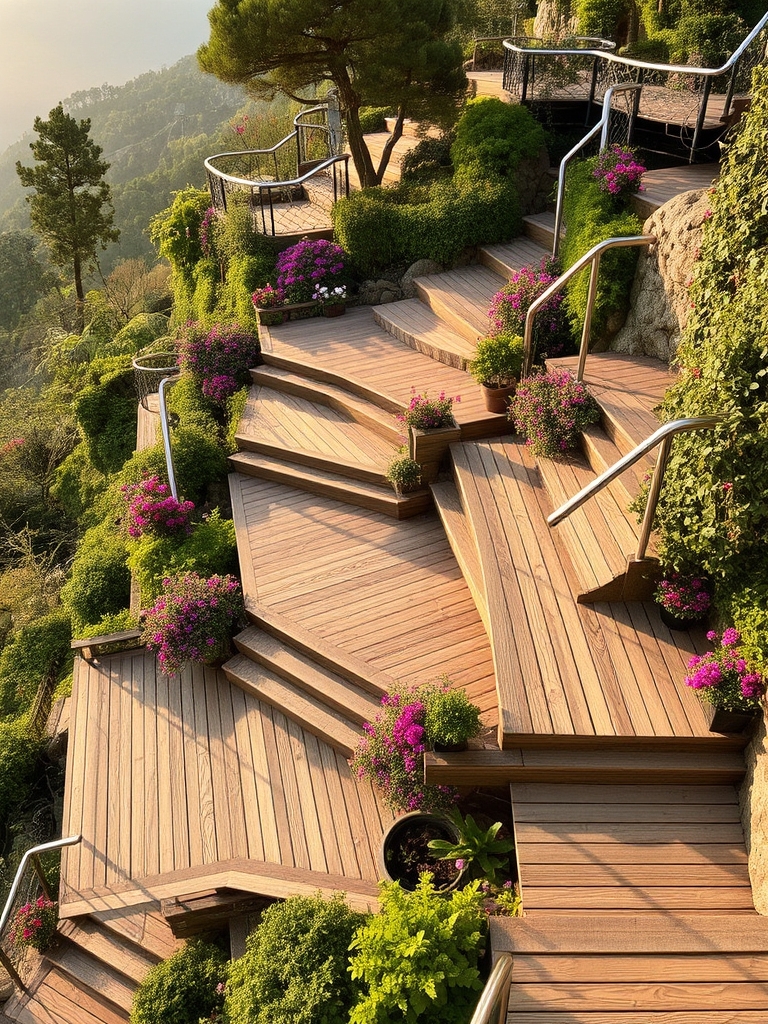
Using decking to create a level space on a steep hill area can be a great solution. Decking platforms can be built at different levels, connected by stairs or ramps, to create a functional and visually appealing outdoor space. This allows for seating areas, planters, and other garden features to be incorporated into the design.
Building Stairs and Pathways for Accessibility

Building stairs and pathways is vital for accessibility in steep hill areas. Well-designed stairs and walkways provide safe passage, while retaining walls and railings offer support and stability. Materials like stone, wood, or metal can be used to create visually appealing and functional pathways that meander through the landscape.
Installing a Rain Garden for Effective Drainage
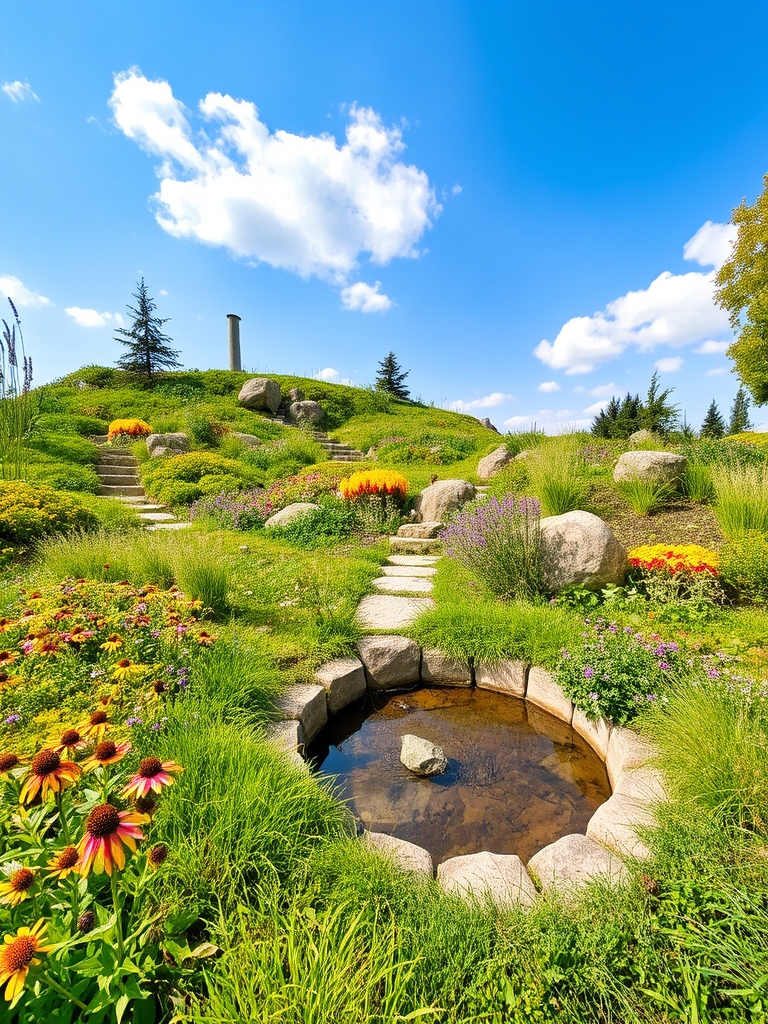
Installing a rain garden on a steep hill area can effectively manage stormwater runoff and prevent erosion. A shallow depression is created to collect and filter rainwater, allowing it to slowly infiltrate the soil, reducing the risk of landslides and sedimentation. This approach also creates a beautiful garden feature.
Choosing the Right Plants for Sloping Gardens
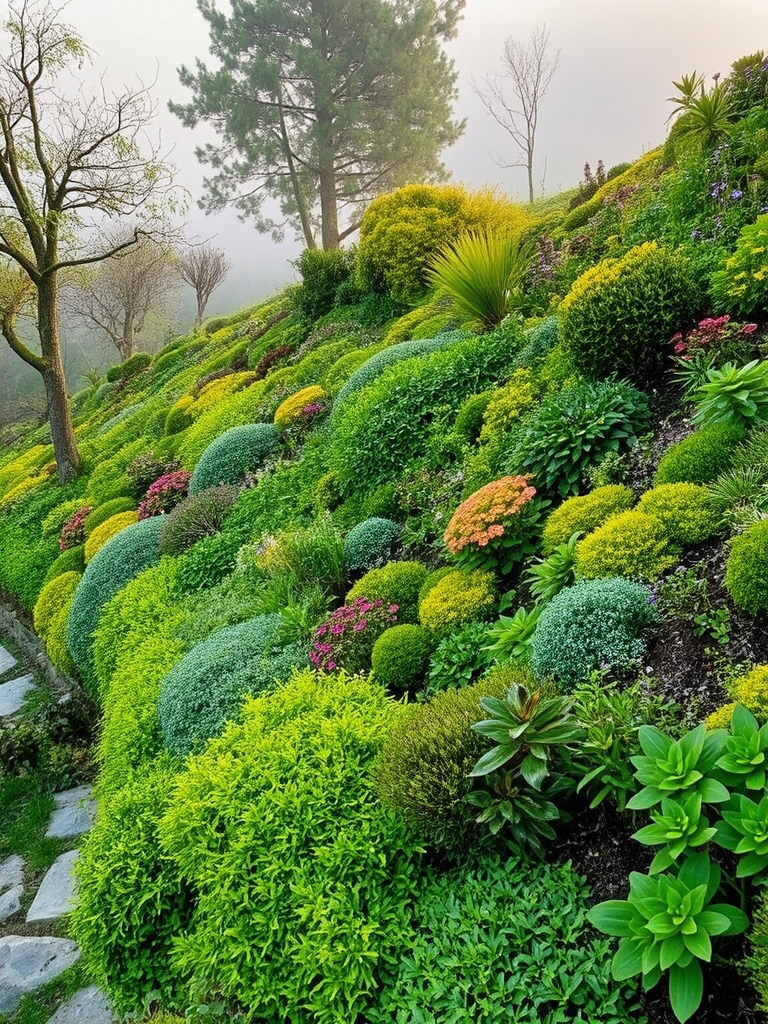
Selecting suitable plants is vital for sloping gardens. Choose plants with deep roots to prevent erosion and those that thrive in well-draining soil. Consider low-maintenance groundcovers, shrubs, and perennials that can stabilize the soil and require minimal upkeep, allowing your steep hill area to flourish with minimal effort.
Creating a Tiered Garden With Planters
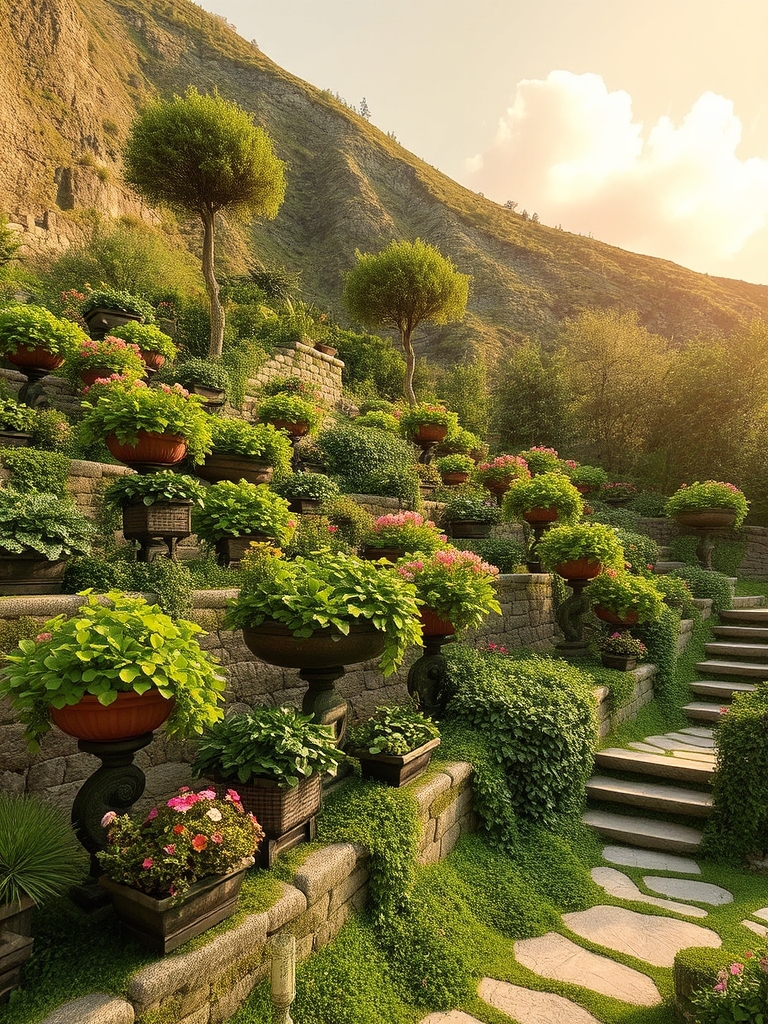
Creating a tiered garden with planters is an ideal solution for steep hill areas, allowing for maximum use of space. Stacked planters or retaining walls can be used to create multiple levels, each containing a variety of plants and flowers, adding visual interest and beauty to the area. This design also helps with erosion control and accessibility.
Incorporating Water Features Into a Sloping Garden

Incorporating water features into a sloping garden can add visual interest and create a soothing atmosphere. Small ponds, cascading fountains, or meandering streams can be designed to flow down the slope, utilizing the natural terrain to create a unique and enchanting landscape feature that also helps with erosion control and drainage.
Making the Most of a Small Sloping Garden
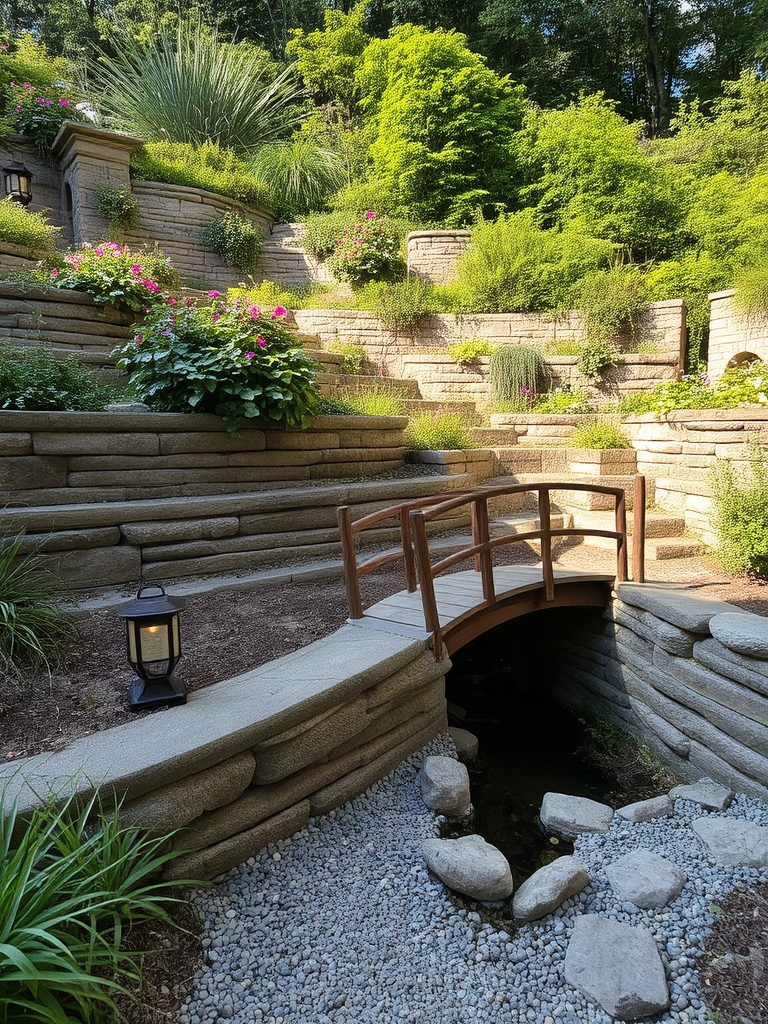
Small sloping gardens can be challenging, but also offer opportunities for creative design. Tiered planting, retaining walls, and meandering paths can help to maximize space and create a visually appealing landscape. By incorporating elevated planters and strategically placed seating areas, you can make the most of your small sloping garden.
Building a Gabion Wall for Erosion Control
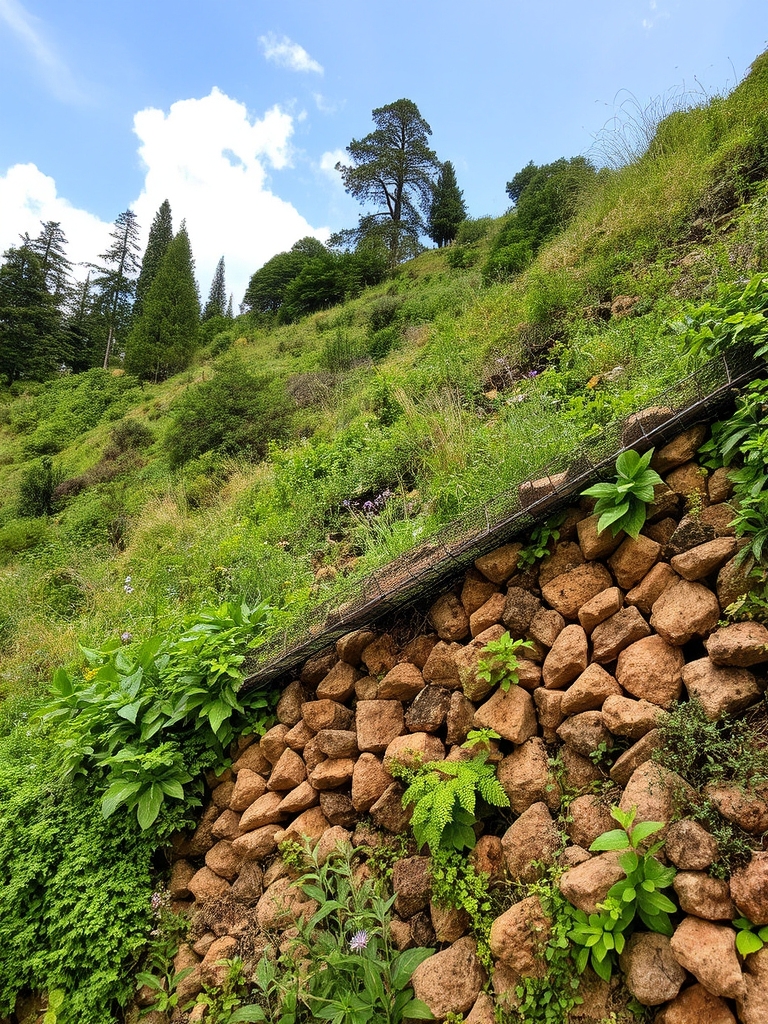
A gabion wall is a versatile solution for erosion control on steep hills. Made from wire mesh baskets filled with rocks or soil, these walls stabilize the terrain, preventing landslides and soil loss. They also double as a unique garden feature, allowing plants to thrive in the gaps between the stones, creating a natural and visually appealing landscape.
Designing a Wildlife-Friendly Sloping Garden

Designing a wildlife-friendly sloping garden involves incorporating native plants, shrubs, and trees that attract local fauna. Consider a layered approach with terracing, using stone or wooden retaining walls to create flat areas for planting, while allowing excess water to drain, creating a thriving and diverse ecosystem on your steep hill area.
Creating a Seating Area on a Slope

Building a seating area on a slope requires careful planning and design. Terracing the land or using retaining walls can help create a level surface, while incorporating stairs or a winding path can provide safe access. Choose chairs or benches with a wide base for stability and consider anchoring them to the ground for added security.
Illuminating a Sloping Garden With Outdoor Lighting

Outdoor lighting can beautifully illuminate a sloping garden, highlighting its unique features and creating ambiance. Strategically placed lights can accentuate paths, stairs, and plants, while also providing safety and visibility on steep hill areas. Solar-powered or low-voltage lights are ideal for sloping gardens, offering energy efficiency and easy installation.
Conclusion
You’ll find that 70% of hillside erosion can be prevented with proper retaining walls. By implementing these 15 garden ideas, you’ll create functional spaces, stabilize soil, and add visual interest, making your outdoor area beautiful and low-maintenance, while also preventing costly erosion damage, thereby enhancing your property’s value.

